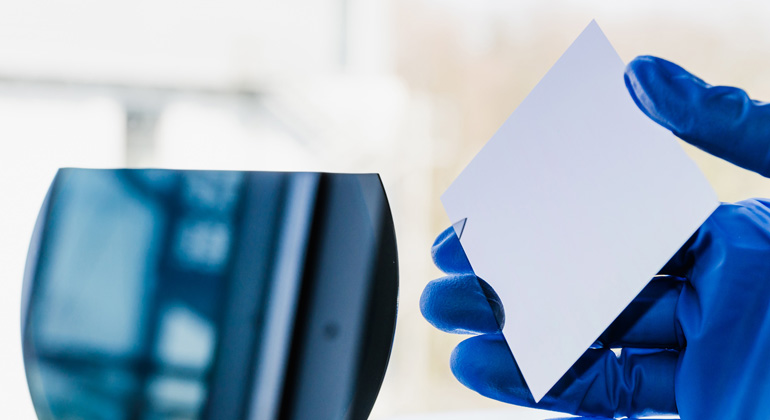20% Efficient Solar Cell on EpiWafer
Recently NexWafe GmbH was spun out of the Fraunhofer Institute for Solar Energy Systems ISE, in order to bring the Institute’s kerfless EpiWafer technology to the market and rapid commercialization.
In the EpiWafer technology, a thick crystalline silicon layer is epitaxially deposited and subsequently detached after growth to produce a freestanding wafer of standard thickness. Due to the radical changes in the manufacturing value chain, EpiWafers can be produced at an appreciably lower cost compared to the traditional wafer manufacturing process. The EpiWafer is a direct substitute for conventional n- or p-doped silicon mono-crystalline wafers.
Now, Fraunhofer ISE reports on substantial progress in the development of its EpiWafers, which are seen as a drop-in replacement for conventional Cz wafers. Fraunhofer ISE’s research team in co-operation with NexWafe has optimized all production steps for the EpiWafer. Analysis of the new n-doped EpiWafers shows that mean minority carrier lifetimes are above 1000 µs, indicating the same quality as n-type Cz wafers. Solar cells processed on these EpiWafers yield 20% efficiency, independently confirmed at the Fraunhofer ISE CalLab. “I am elated about this fantastic result,” says Dr. Stefan Janz, Head of the Department of Silicon Materials. “This success attests to our fast progress made in only a few months since focusing on EpiWafers.” The solar cells achieve a short-circuit current of 39.6 mA/cm2, a world-record value for epitaxially grown silicon solar cells. The new results will be presented during the coming European PVSEC in Hamburg.
Dr. Stefan Reber, CEO of NexWafe, is also very excited about the new results: “These values demonstrate that our EpiWafer technology is a game-changing technology. It accelerates the shift of the market towards high efficiency modules by providing high quality drop-in mono-crystalline EpiWafers at a very competitive price.”








